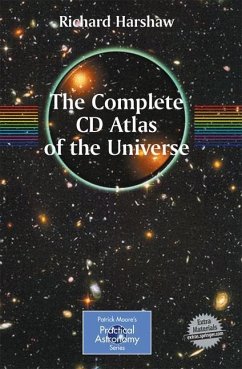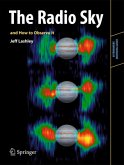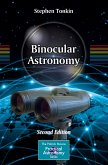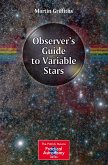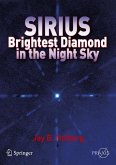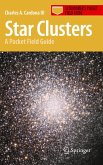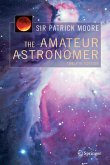This is without doubt the largest and most comprehensive atlas of the universe ever created for amateur astronomers. It is the first major observing guide for amateurs since Burnham's Celestial Handbook. With finder charts of large-scale and unprecedented detail, in both normal and mirror-image views (for users of the ubiquitous Meade and Celestron Schmidt-Cassegrain telescope ranges), and an extensive list of 14,000 objects, it will provide a detailed observing guide for almost any practical amateur astronomer, up to the most advanced.Spanning some 3,000 pages, this is a project that is possible only with Springer Extra Materials, http://extras.springer.com.The atlas covers the whole range of objects viewable by amateur astronomers with 8- to 11-inch telescopes, from latitude approx +40 degrees. The projected total number of objects is (currently) 13,238, compared with Burnham's approximately 5,000 double stars (in three volumes). This is much more than just a catalog of objects.As planned, the atlas will have about 270 double star images and sketches, and 590 or so deep-sky images and sketches. Comparisons with other atlases are invidious, but Tirion's atlas and Uranometria, for example, don't go as deep in magnitude and the scale is unsuitable for "star hopping" in the eyepiece-where the action REALLY takes place. The charts in the Complete CD Atlas of the Universe and the scale they are on, allow the user to get enough detail to easily find the objects described. In addition mirror-image charts are supplied for instruments with reverse fields (all SCTs).This is also much more than 'planetarium' software.Many planetarium programs do not have good object databases, and those that do have databases that are too large for practical field use. For example, TheSky, one of the most popular (and best) programs, can display the entire Washington Double Star Catalog (some 120,000 doubles!), but 90% of these are not resolvable (or evenviewable from certain horizons), and there is no way to determine that by looking at the screen. The result is that there are more objects plotted on the screen than you can actually see, and the clutter makes it very hard to find what you want.The pages on Springer Extra Materials are extensively indexed and referenced for quick location of objects, areas, classes of objects etc..The accompanying book gives an introduction to the Atlas, showcases the maps (thus buyers can see what they are getting without visiting Springer Extra Materials), describes the Springer Extra Materials content and organization, and includes various appendices.
From the reviews:
"Amateur astronomer Harshaw (Stardeck Observatory, MO) compiled this recent entry in the 'Practical Astronomy' series. ...The CD-ROM is well organized; it includes bank observing forms and images of more than 10,000 double stars, more than 1,400 galaxies, and other objects reachable by an amateur-size telescope. ... Charts are of excellent quality. ... Summing Up: Recommended. General readers." (M. -K. Hemenway, CHOICE, Vol. v4 (3), November, 2007)
"The printed part of the book contains clear and simple explanations of some of the basics of amateur astronomical observing ... . The heart of the work is the CD-ROM with finding charts and the listing of the 13,238 objects. ...Overall, for those amateurs in the northern hemisphere of a taxonomic bent this CD atlas would be of great assistance." (Nick Lomb, Australian Physics, Vol. 44 (4), 2007)
"Patrick Moore in his book, 'Atlas of the Universe' brings many of the wonders of this space ... . The universe is big but this book makes it all very manageable. ... the book is a veritable treasure of information and pictures suitable for the young and uninitiated who want to learn more of the universe in which Earth travels. ... With copious pictures and well rounded phrases, anyone can use this book to help them travel off-planet to wherever their eyes lead them." (Mark Mortimer, Universe Today, September, 2006)
"Amateur astronomer Harshaw (Stardeck Observatory, MO) compiled this recent entry in the 'Practical Astronomy' series. ...The CD-ROM is well organized; it includes bank observing forms and images of more than 10,000 double stars, more than 1,400 galaxies, and other objects reachable by an amateur-size telescope. ... Charts are of excellent quality. ... Summing Up: Recommended. General readers." (M. -K. Hemenway, CHOICE, Vol. v4 (3), November, 2007)
"The printed part of the book contains clear and simple explanations of some of the basics of amateur astronomical observing ... . The heart of the work is the CD-ROM with finding charts and the listing of the 13,238 objects. ...Overall, for those amateurs in the northern hemisphere of a taxonomic bent this CD atlas would be of great assistance." (Nick Lomb, Australian Physics, Vol. 44 (4), 2007)
"Patrick Moore in his book, 'Atlas of the Universe' brings many of the wonders of this space ... . The universe is big but this book makes it all very manageable. ... the book is a veritable treasure of information and pictures suitable for the young and uninitiated who want to learn more of the universe in which Earth travels. ... With copious pictures and well rounded phrases, anyone can use this book to help them travel off-planet to wherever their eyes lead them." (Mark Mortimer, Universe Today, September, 2006)

